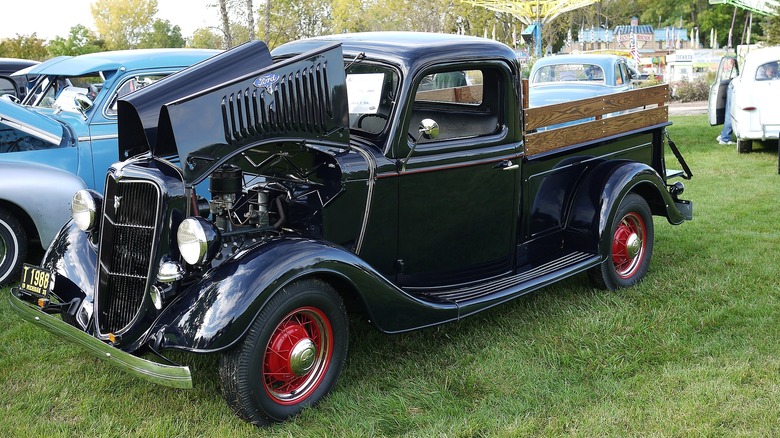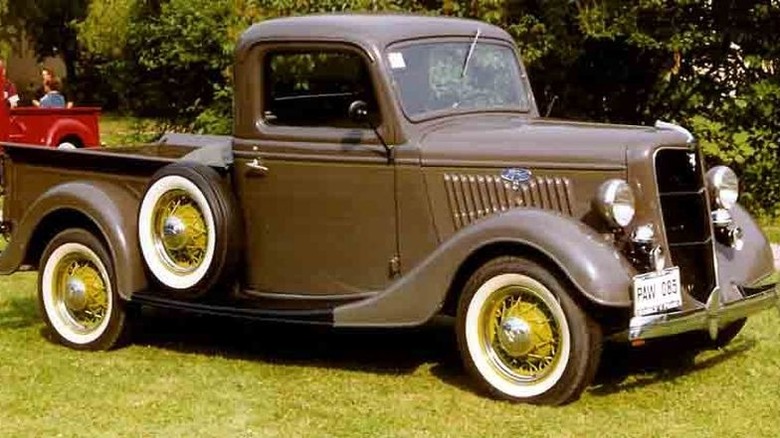Here's What Made The 1935 Ford Half-Ton Pickup Truck So Unique
Ford made its first truck — the Model TT — in 1917. What you may not know is that when it went on sale (for $600), Ford made the chassis and engine (taken from its first production car, the Model T), but buyers had to either build the cab and bed configuration themselves or have a third party coach builder complete them.
This may seem like a very odd arrangement now, but back then, it was a simple matter of economics that was commonplace. What we would consider "standard features" — or even standard components of a vehicle — didn't become available as add-on options until later. The addition of a cab cost another $45 to $65, and a factory body wasn't marketed until 1923.
For the rest of the 1920s and into the early '30s, Ford offered Model A and Model B trucks that still looked much like a converted Model T car. Then, in 1935, Ford unveiled a plethora of styling updates to all of its vehicles, including the new Model 50 half-ton pickup. The truck still took many of its styling queues from passenger cars, but every one of them was still powered by Ford's exalted 3.6-liter flathead 85hp V8 engine. It was such a hit that it helped Ford sell more vehicles than Chevrolet in 1935 — a feat the company would not repeat the following year.
[Featured image by F. D. Richards via Wikimedia Commons | Cropped and scaled | CC BY-SA 2.0]
The Model 50 changed the truck game
One of the more unique features of the pre-war Model 50 was the cab. Prior to its redesign, the substructures of the cabs (when available) were built from wood. This changed entirely in 1935 when Ford began building cabs completely out of steel and all in one piece. Instead of the angular lines of the old Model TT, A, and B, the Model 50 came with a more rounded roof and a sloped windshield. This design philosophy was also reflected in the heart-shaped radiator grille, which added a touch of sophistication to the utilitarian work beast.
The cargo bed was lengthened to 69 inches, and the spare tire was moved to the passenger side, ahead of the fender. Deluxe models followed soon after the base version and were fitted with a swan neck gear shifter for the three-speed sliding manual, as well as a new V-shaped bumper.
The Model 50 remained in production until 1941 and sold more than four million trucks. During World War II, all American carmakers ceased construction of passenger vehicles and redirected their prodigious production power to the war effort.
[Featured image by Lars-Göran Lindgren Sweden via Wikimedia Commons | Cropped and scaled | CC BY-SA 3.0]

